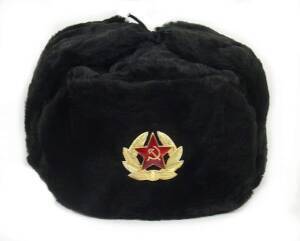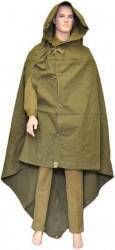
Conscripts! Wrap Your Portyanki!
Призывники!
Свяжите
портянки!
Portyanki / Портянки
Napoleon Bonaparte famously said "An army marches on its stomach", emphasizing the importance of logistics — an army can't function if it doesn't have food. Along the same lines, Omar Bradley said "Amateurs talk tactics, professionals study logistics." Well, an army quite literally marches on its feet, and if adequate footwear is unavailable, it can't move or even fight in place. A time-tested solution is available.
They will only take away our smelly flannel when they unwrap it from our cold, dead feet!
Портянки or portyanki, called "foot wrappings" in the west, have been used by armed forces around the world since the Roman Legions first ventured into cold regions like Britannia. They are a warm and durable fabric used in place of the clearly inferior sock.
[1] There are allegations that portyanki were introduced from the Dutch practice by Peter the Great, but obviously those making that claim have not read Миграции и оседлость от Дуная до Ладоги в І тысячелетии храстианской эры: пятые чтения памяти Анны Мачинской, or Migration and Settlement from the Danube to Lake Ladoga in the 1st Millennium of the Christian Era: The fifth reading in memory of Anna Machinskaya, Ancient Ladoga, 21-22 December 2000, pages 20-22.
Archaeologists tell us that "Leggings and leg wrappings are ancient elements of Slavic costume" dating back to a time when the northern nations from Finland to Siberia were simply putting their shoes on their bare feet. [1]
Over time, socks or "stockings" appeared in the form of luxury items used only by officers.
Portyanki are not applied casually!
Carefully detailed directions are available. If they are not carefully wound from the toe "out" and not "in", the wearer risks the disastrous rubbing of the foot. They must be wrapped carefully to avoid wrinkles and creases. Their material must of course be without any seams.
Other than the need for careful wrapping, the many advantages of foot wrappings are clear:
| Advantages over the so-called "sock" | Disadvantages |
|
None whatsoever |
The Fascist German Wehrmacht had the common sense to wear foot wrappings until the end of the Great Patriotic War in 1945 (although that was the limited extent of sense exhibited by the Fascists).
The formerly Fascist German Democratic Republic used foot wrappings until 1968.
The Finns used foot wrappings until 1990.
The Ukrainians used foot wrappings until 2007 and the Belarussians until 2010. The 169th Training Center of the Land Forces of the Armed Forces of Ukraine has a plaque commemorating the sad date when foot wrappings were taken away from the Army of Ukraine. Many were the poems and fables recited about portyanki on the day of that farewell ceremony.

A Russian soldier dries his foot wrappers as he and a dog relax in Y. G. Gorelov's painting Do the Russians Want War?
Wrap Your Own Portyanki!
Start to wrap your portyanki by placing your foot on the cloth. It might be roughly square or simply rectangular as seen here. Less commonly, triangles are used.
Square portyanki might be a little longer than half an arshin (that is, about 40 centimeters) on a side. The relatively unusual triangular portyanki might be about an arshin (or 75 cm) on each of its equilateral sides.
The portyanki we see here is a rectangle of flannel, about 0.7 by 1.5 arshin, suitable for winter service.
Summer portyanki can be fashioned from cotton.
Extremely cold climates call for felt portyanki and very spacious boots.


Fold a corner over and tuck it beneath your toes. Then firmly grasp the opposite side and bring the main body of the portyanki across your foot.


Continue the wrapping, spiraling up your ankle and lower calf.
The wrinkles and folds seen here must be smoothed out, or else blisters and wounds can occur.
However, it is extremely difficult to photograph yourself while wrapping your own portyanki. You can get the wrinkles out, but you won't be able to do that and take pictures at the same time.
Have you ever tried to photograph yourself while wrapping your own portyanki?
I didn't think so.


Slide your portyanki-protected foot into your boot, smoothing out all wrinkles and folds as you do this.
Continue with the opposite foot and complete your task of portyanki wrapping.
Now you are ready to wear your portyanki for many days under military conditions! An epic stench will develop and it can serve as a traditional Russian chemical weapon.
If your feet become wet, you can remove your boots, unwrap your portyanki, turn them around and re-wrap them with the dry end around your foot and the wet end wound up around your calf outside your boot, where it will dry quickly (as long as your pants are dry and you're not wading hip-deep through a swamp).

The Russian military leader and statesman Prince Grigory Aleksandrovich Potemkin-Tavricheski sent a letter extolling the wonderful advantages of the portyanki to his lover Catherine the Great, the Russian Empress, in 1783:
Просторные
сапоги
пред
узкими
и
онучи
или
портянки
пред
чулками
имеют
ту
выгоду,
что
в
случае,
когда
ноги
намокнут
или
вспотеют,
можно
при
первом
удобном
времени
тотчас
их
скинуть,
вытереть
портянкою
ноги
и,
обвертев
их,
опять
сухим
уже
оной
концом,
в
скорости
обуться
и
предохранить
их
тем
от
сырости
и
ознобу.
В
узких
же
сапогах
и
чулках
того
учинить
никак
не
можно,
которих
неудобно
скинуть,
ни
свободно
опять
надеть
нельзя,
да
и
чулки
не
всегда
бывает
возможность
переменить
или
высушить,
через
что
бедные
солдаты,
имея
безпрестанно
ноги
мокрые,
подвергают
нередко
себя
простуде
и
другим
болезням;
не
имея
нужды
при
узких
сапогах
подвязывать
крепко
свои
ноги,
солдаты
могут
и
свободнее
ходить,
и
более
перенести
путевого
труда,
и
обращение
крови
не
останавливается.
Spacious boots with foot wraps have the advantage
that when the feet get wet, you can at the first
convenient time remove them, wipe off your feet
and re-wrap them from the dry end,
keeping your feet dry and therefore warm.
With tight boots and stockings that cannot be
unwrapped this is impossible, and it is not always
possible to change to a pair of dry stockings.
The unfortunate soldiers with wet feet
are susceptible to colds and other illnesses.
Soldiers in spacious boots with foot wraps can
walk freely, march further, and have good blood
circulation.
Portyanki in the News
The BBC, RIA Novosti, Moscow Times, The Globe and Mail and other prominent news organizations have reported on the portyanki situation.
Did You Know?
American professional sports teams used to salute the portyanki in their team names. Many were the proud fans of the Chicago Белые Портянки and the Boston Красные Портянки back in the day. In the case of the Boston team, "Red" has the same connotation in Krasniye Portyanki that it has in Красная Площадь, Krasnaya Ploshchad' or Red Square, a connection to красивый or Beautiful.
But after the Russian Revolution of 1917, many of the American professional sports teams changed their mascots to the lowly "Socks". Traditional Russian team names were almost completely eliminated during the "Red Scare" of the 1950s.



